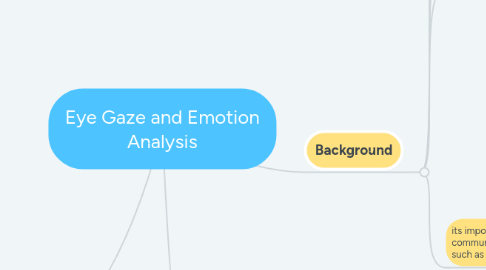
1. Related work
1.1. Eye contact detection
1.2. appearance analysis if the eye regions
1.3. Classical eye tracking methods in autism
2. Background
2.1. Eye Contact (first months of life)is the crucial fact
2.2. ASD ( difficulties in engaging with the social world)
2.3. show atypical patterns of gaze, eye contact and joint attention(earliest indicators of autism in the first two years of life)
2.4. early diagnosis and intervention can substaintally increase positive outcome
2.5. its important to measure of social communication(social behavior such as eye contact)
2.5.1. Eye contact tracking
2.5.1.1. recorded from one or more cameras and manual annotations by multiple human raters - (clearly does not scale to broad use in screening and outcome assessment )
2.5.1.2. eye tracking technology provides another approach for automatically assessing gaze behavior in social context
2.5.1.2.1. require passively view content or wear head-mounted eye tracking hard wear
2.5.1.3. recommend to have face to face iteractions
2.5.1.4. utilize a point of view camera worn by an adult social partner to measure a child's eye contact behavior
2.5.1.4.1. head -worn camera provides high quality visual data
2.5.1.4.2. POV platforms such as pivothead and snapchat spectacles
2.5.1.4.3. in these platforms high definition outword facing camera is integrated into pair of glasses
2.5.1.4.4. in the pivothead, camera is located at the bridge of the nose. its aligned with the adults eyes and when the child looks to the adults eyes ,it will capture as a look towards the camera
2.5.1.4.5. its challenge due to the diverse and varied appearance of the human eye and role of the head pose determining gaze direction.
2.5.1.5. Novel deep learning architecture for eye contact detection in which head pose is jointly estimated along with eye contact detection.

